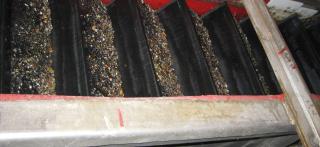
When it Rains, Grit Pours!
HeadCell® / Hydro GritCleanse® protects South Carolina's Gills Creek WWTP during extreme weather events.
Situation
The greater Columbia, SC metropolitan area is home to the state’s capital, the University of South Carolina, and 829,470 residents. Like much of the southeast, the area has mild winters and hot and humid summers. In fact, Columbia’s city slogan used to be “Famously Hot”. The Columbia region experiences heavy storm events, averaging 15 rain events with an inch (25 mm) or more each year. Tropical thunderstorms during hurricane season frequently bring a high volume of rainfall to the region within a short timeframe.
The Gills Creek WWTP, part of the East Richland County PSD just south of Columbia, sits less than 2 miles (3.2 km) from the Congaree River which feeds into Congaree National Park and the Congaree Swamp. With such an important ecosystem nearby, and frequent heavy storm events, treatment plant protection is of paramount importance.
Project
Like many municipalities, East Richland County’s collection system is aging with various levels of inflow and infiltration issues. This allows the region’s sandy soil to deposit throughout the interceptor lines, with hard rain events rapidly introducing all the deposited grit, sand, and debris into the treatment plant. While the PSD is not a combined storm / sanitary sewer system, these heavy rain events always had potential to impact the Gills Creek treatment plant profoundly.
Gills Creek had aging aerated grit basins with a chain and bucket removal system that had never provided much protection, in addition to having become a maintenance nightmare. As a result, the plant had struggled with grit for years. East Richland PSD wanted a solution that could reduce their maintenance burden and provide surge capacity to protect the plant during storm conditions. In 2016, the plant began the process of selecting a grit removal system that could solve their grit problem.
After evaluating various technologies, they found their ideal solution in a HeadCell® / Hydro GritCleanse® system which was started up in April 2020. The Hydro GritCleanse uses a fluidized sand bed which is initially created by seed sand which remains inside the clarifier until sufficient endemic grit has been captured to discharge. For the first month of operation, they had seen very little grit discharge and were wondering if the system was even capturing grit.
They did not have to wait long to see dramatic results. Around Memorial Day 2020, Tropical Storm Bertha was brewing off the coast which helped launch a major storm event that began May 19th with a record breaking 2.53” (6.4 cm) of rain in a single day. The weather system lingered throughout Memorial Day (May 25, 2020) when they again were pummeled by another 2.18” (5.5 cm) in a single day. The weather still wasn’t letting up, culminating in a 3.51” (8.9 cm) rain event on May 30th. Over this 12-day period the city was subjected to a total of 9.3” (23.6 cm) of rain. These storms helped make May 2020 the wettest May on record in South Carolina.
The system was tested again during an extraordinarily heavy winter rain event over New Year’s weekend at the beginning of 2021. The Columbia area was pounded by over 3” (7.6 cm) of rain during the weekend causing an extended period of high flows and extreme grit loads.
Result
During these rain events, the city saw first-hand how well their new HeadCell® / Hydro GritCleanse® was protecting them. With such heavy rains, flooding was happening across the state. During these severe storms, area residents had plenty to worry about, but their critical wastewater infrastructure needs was not one of them.
During the heaviest parts of the rains their new Headcell® and Hydro GritCleanse® system from Hydro International was filling dumpsters with low organic grit ready for landfill, depositing between 25 and 30 tons of grit per event into their dumpsters rather than throughout the treatment plant.

























